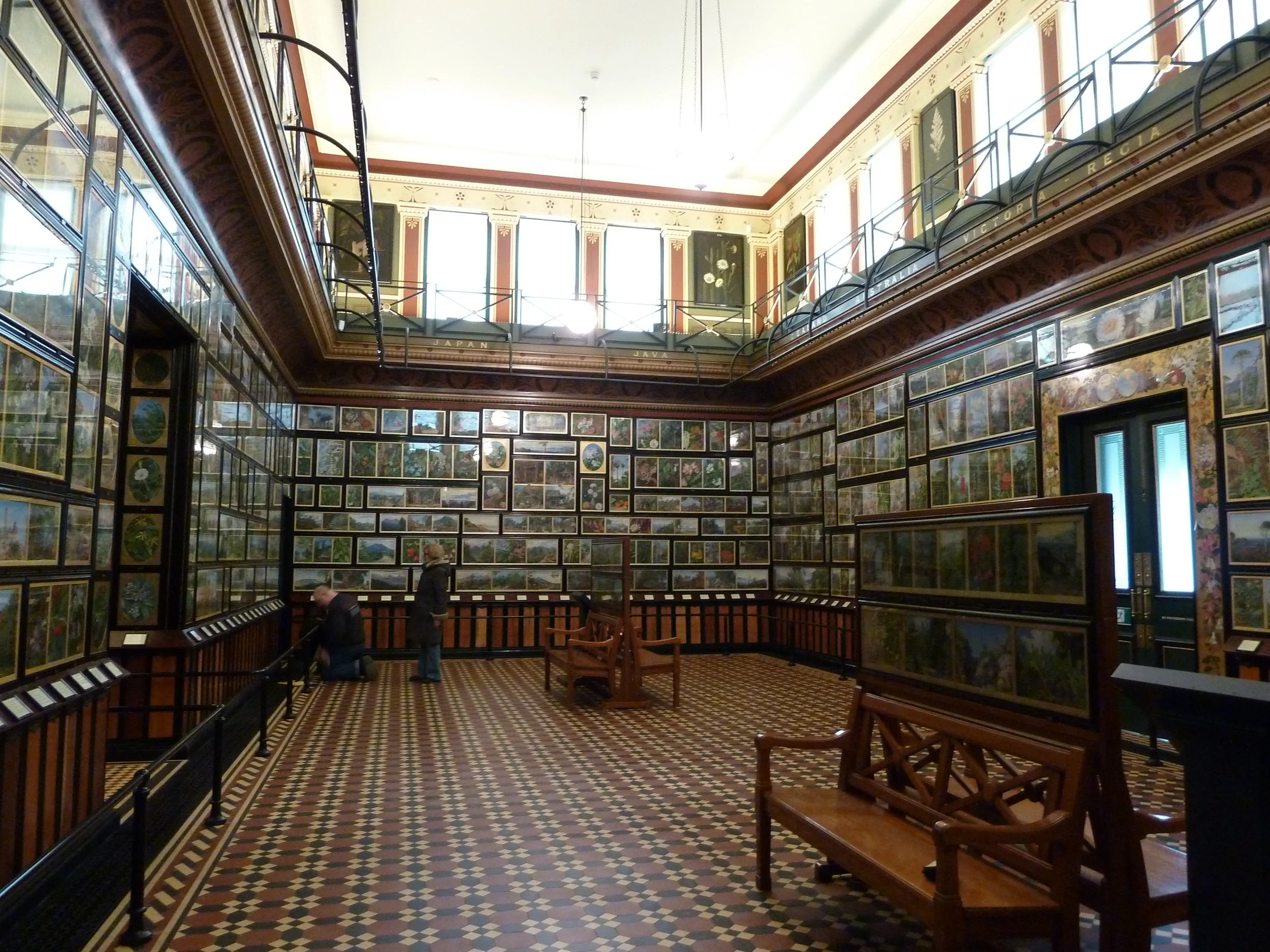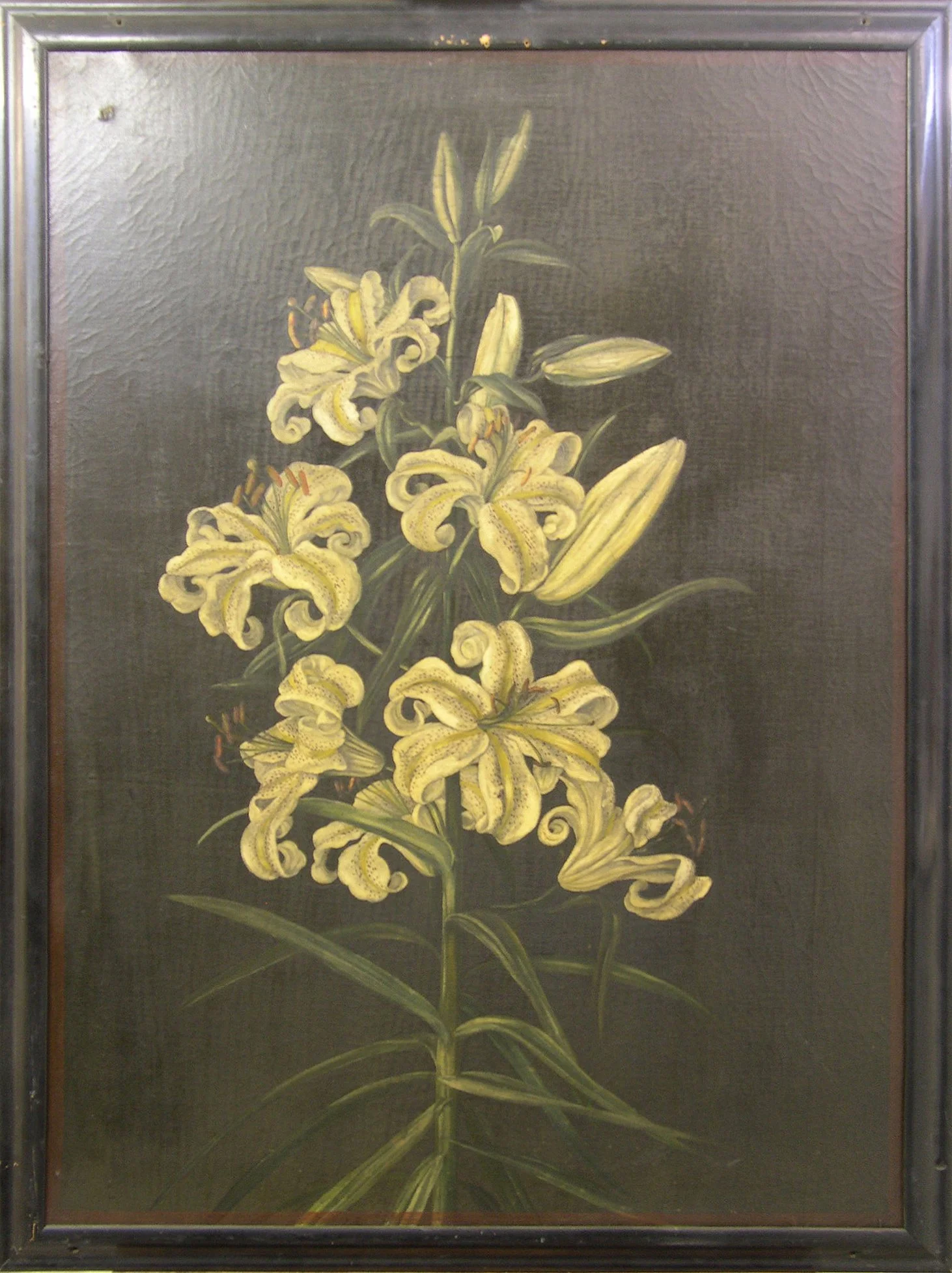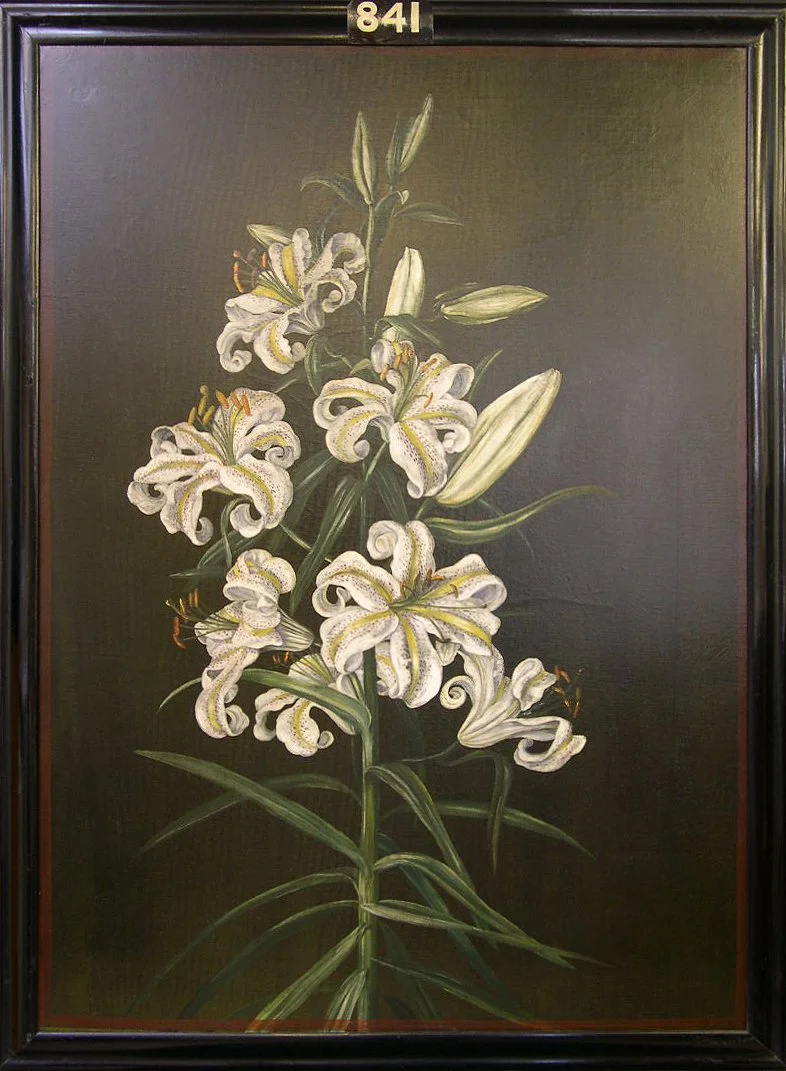The Marianne North Gallery, Kew Gardens
Artist: Marianne North
Date: circa 1880
Marianne North (b.1830 – d.1890) dedicated her life to recording the flora and fauna she observed as she travelled around the world before donating her life’s work to Kew Gardens.
Painting of a Lily
Condition.
This painting is one of the 16 oil on canvas artworks displayed in the clerestory.
The overall condition was quite bad. There was a small hole in the top right and the canvas was very weak especially around the turn over edges. The stretcher was dirty, the tension was slack and some of the tensioning keys were missing.
There was a thick layer of dirt on the front and a severely discoloured varnish.
Treatment.
Unstable paint was consolidated and the turn over edge was strengthened where necessary. The wooden stretcher was cleaned and new keys were made and secured in position to facilitate ‘keying out’ to improve the tension.
Tests to dissolve the varnish proved to be difficult as the solvents generally used to remove surface coatings damaged the paint layer. Following extensive cleaning trials to find a safe method of cleaning, a solvent mixture that was new to me was used.
Research into the chemical properties of this mix and the artists unusual use of materials was published in a paper entitled ‘Marianne North’s Botanical Paintings at Kew Gardens: Removing Surface Coatings from Unconventional and Solvent Sensitive Grounds’. This was published by the British Association of Painting Conservators Restorers (BAPCR) in 2011.
After cleaning a brush varnish was applied to saturate the colours and the losses were filled, textured and toned down. Further retouching was carried out to reintegrate the paint layer as far as possible before applying a semi matt spray varnish to unify the surface.
An inert transparent film was secured to the back of the stretcher to help reduce degradation due to fluctuations in temperature and relative humidity. The painting was secured into the frame to conservation standards.
Chilli Door
Condition.
The Chilli door is one of two doors on the ground floor in the main gallery.
Painted in oil on textile and stuck onto the upper panels in the wooden door, some disfiguring blisters had developed and there was some cracked and unstable paint.
There was a thick layer of dirt on the surface and at least one surface coating all of which were masking the original colours.
Treatment.
Blisters were carefully flattened and the paint was consolidated before cleaning could begin.
The thick top layer of dirt was removed to reveal two surface coatings, one a natural resin varnish and another, probably composed of wax. Extensive tests were necessary to find effective solvent mixtures capable of dissolving each layer. This cleaning process was further complicated by a layer of dirt trapped between these coatings, indicating that the doors had needed cleaning in the past but that this treatment had been omitted.
After removing all the dirt and varnish layers to reveal the bright original surface, a fresh varnish was applied to enhance the colours.
Losses were filled, textured and retouched and a spray semi-matt varnish was applied to unify the surface.
Stencilled Coving
Condition.
The stencilled coving was covered in a thick layer of dirt. Wide cracks had opened up in places, there were unstable areas of plaster and some areas of loss.
Treatment.
Work involved cleaning off the dirt, stabilising, filling and retouching the plaster. A fresh varnish was applied to revive the overall appearance of the coving.





















